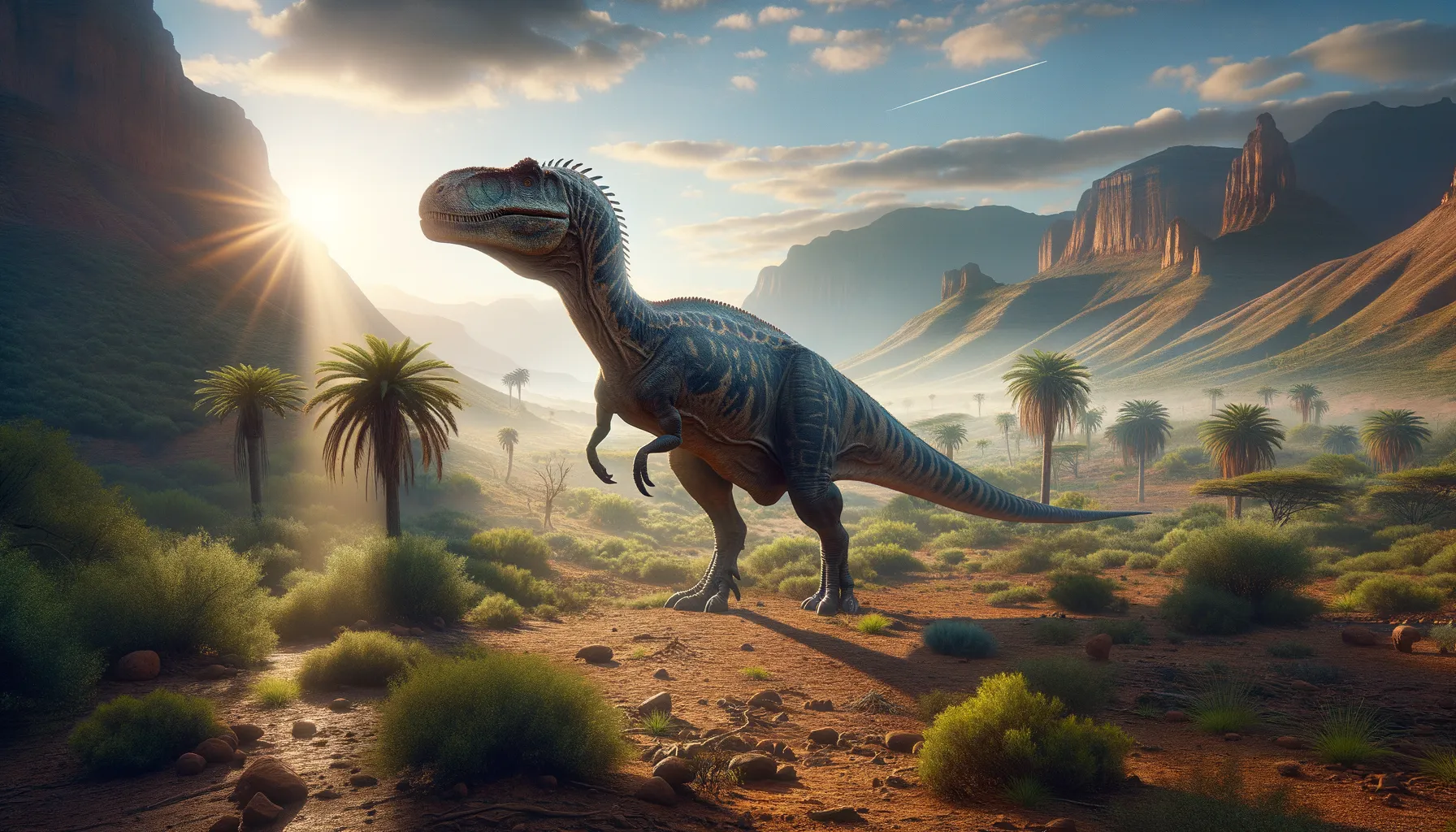
Chenanisaurus
Predator of the Late Cretaceous Sands
Period
Cretaceous
Length
Approximately 7 to 8 meters long.
Height
Around 3 meters tall.
Weight
Approximately 3 to 4 tons.
Chenanisaurus was a large theropod dinosaur that lived during the late Cretaceous period. Its discovery in Morocco's Kem Kem Beds provided valuable insights into the diversity of predatory dinosaurs in Africa during this time. Known for its robust build and significant size, Chenanisaurus likely occupied a top predator role in its ecosystem. Its fossils help paint a clearer picture of the complex environments that existed prior to the mass extinction event that ended the reign of dinosaurs.
Diet
Chenanisaurus was a carnivore, likely preying on smaller dinosaurs and other vertebrates. It might have also scavenged for food, taking advantage of any available carcasses. Its diet would have depended on the availability of prey in its environment.
Hunting
As a predator, Chenanisaurus likely stalked its prey using its size to overpower. It relied on sharp teeth and strong jaws to capture and subdue its meals. Its hunting strategy might have involved ambush techniques, given its imposing presence.
Environmental challenges
Living in the arid environment of the Kem Kem Beds, Chenanisaurus faced challenges such as finding enough water and prey. Seasonal changes might have influenced food availability, requiring adaptation. The presence of other large predators would have added competitive pressure on resources.
Speed
Relatively slow-moving due to its size.
Lifespan
Estimated to live around 20 to 30 years.
First discovery
Uncovered in the Kem Kem Beds of Morocco in 1996.
Fun Facts
- Chenanisaurus was a carnivorous dinosaur that lived around 66 million years ago in what is now Morocco.
- It was a close relative of the Tyrannosaurus rex, as both belonged to the group of dinosaurs known as theropods.
- Fossils of Chenanisaurus were found in phosphate mines, which are abundant in the minerals that often preserve ancient bones.
- The dinosaur is relatively new to science, first being described in 2017.
- Chenanisaurus had a short, robust skull and sharp teeth, making it well-equipped for hunting prey.
- Its name means 'Chena lizard,' with 'Chena' referring to the region where it was discovered in Morocco.
- Chenanisaurus lived during the Late Cretaceous period, right before the mass extinction that wiped out most dinosaurs.
Growth and Development
Chenanisaurus likely grew rapidly during its early years to reach its large size. Juveniles might have faced high predation risk, necessitating protective behaviors. Once mature, its large size would have provided a measure of defense against other predators.
Habitat
The Kem Kem Beds, where Chenanisaurus was found, were characterized by dry, semi-arid environments with river systems. Vegetation would have included sparse forests and shrublands, impacting available cover and hunting grounds. These environments were shared with various other dinosaur species.
Interaction with other species
Chenanisaurus likely interacted with a variety of dinosaur species, both prey and competitors. Given its role as a top predator, it would have had few natural enemies. Competition with other large predators for resources could have been a significant aspect of its existence.
Natural lifespan
Its natural lifespan might have ranged from 20 to 30 years in the wild.
Reproduction
Chenanisaurus likely laid eggs, with nests built in secluded areas for safety. Young would have been cared for by parents or might have remained in groups for protection. Reproductive behavior would have been critical for ensuring species survival.
Social behaviour
Social behavior of Chenanisaurus is not well-documented but likely included solitary hunting. Interaction with others may have occurred mainly during mating seasons. Juveniles might have stayed together for protection against predators.
Fossil locations
Fossils of Chenanisaurus have been primarily found in Morocco's Kem Kem Beds. These sites are rich in dinosaur remains and provide crucial insights into late Cretaceous ecosystems. Excavations continue to reveal more about its lifestyle and environment.
